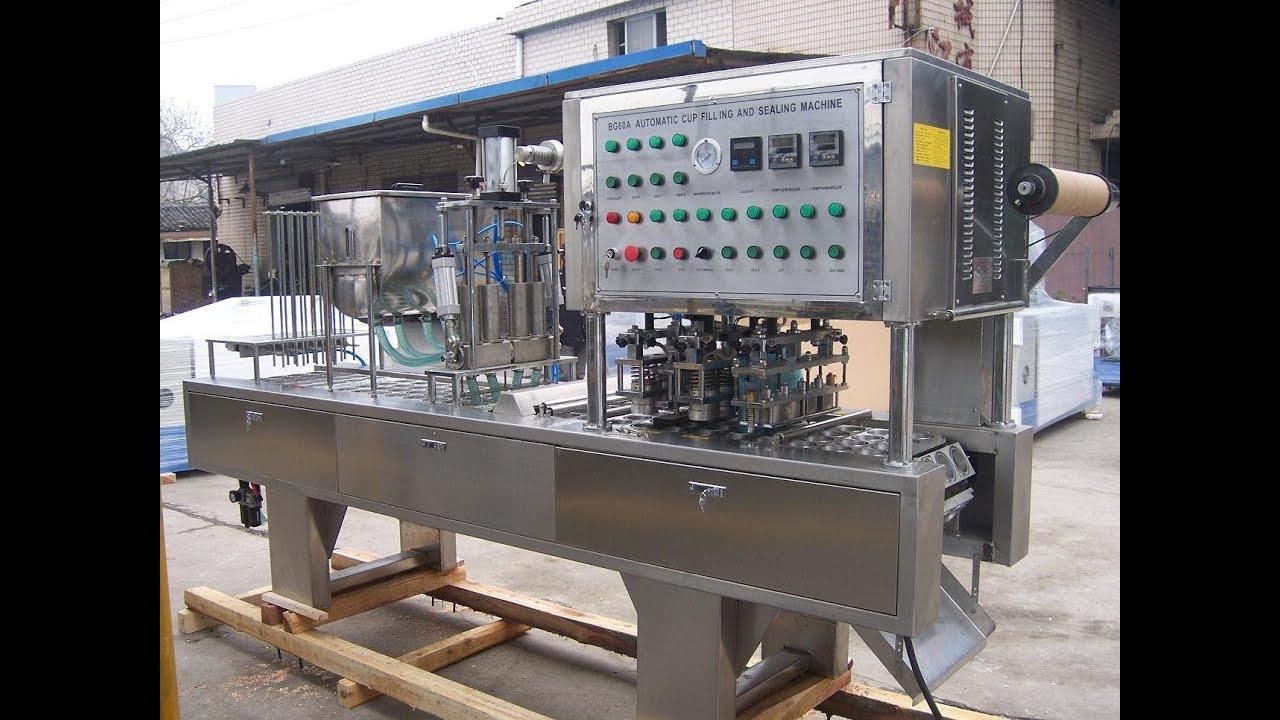Here are all the information about Cup Filling & Sealing Machine in this article
There are three main components to the automatic cup filling and sealing machine: a frame, a conveying device, and an electronic control system. In operation, the sealing part of the packaging bag is automatically fed between the two sealing belts as soon as the package with the items is placed on the conveyor belt. Bringing the package into the heating zone of the automated cup sealing machine.
The heat of the heating block is transferred to the sealing part of the bag through the sealing belt to melt and soften the film. In the automatic cup filling and sealing machine, the packaging bag is passed through a cooling zone that cools the surface of the film. After the plastic film of the sealing part is bonded by the printing wheel, the automatic cup filling and sealing machine presses the printed logo. By means of the conveyor belt and the guiding rubber belt, the sealed packaging bag is sent out of the device.
Automatic sealing machines have also gained a broad market in recent years, as food, medicine, and other industries have developed rapidly. The market for automatic sealing machines continues to grow in size. And food packaging machine suppliers continue to innovate and upgrade their products in order to keep up with fierce competition. Their goal is to create equipment that is attractive, efficient, easy to operate, and easy to maintain. Customers can benefit from the device in terms of economic development, but some common faults must still be resolved when using it.
1. Improper sealing
A common cause of failure of automatic sealing machines is inadequate sealing. There are three main reasons for this.
In the first place, it is unable to see the sealing of the packaging bag due to factors such as a low heat sealing temperature and an excessive speed of heat sealing. Corona treatment that is uneven produces poor results, and plastic cups and packaging bags cannot be closed properly. When such a problem occurs, it must be scrapped. It is therefore essential to analyze the cause of the problem and resolve it as soon as possible after discovering it. Insecure seals will also result from moisture and dirt in the seal. This failure situation can be solved by increasing the heat sealing temperature, reducing the heat sealing speed, and increasing the pressure of the cold-pressed rubber wheel simultaneously.
A second reason is that, even when the packaging bag or plastic cup is sealed, if you squeeze or tear it harder, the sealing will crack again. Insufficient flatness of the knife surface of the heat-sealing knife and low heat-sealing temperature are responsible for this condition. By increasing the heat sealing temperature appropriately, the automatic cup sealing machine can solve the problem if the temperature is not high enough. Make corresponding adjustments on the computer if the hot air knife surface of the automatic cup sealing machine is not neat enough.
Additionally, half of the seal is firm when the peeling test is performed, and half of the seal separates. During storage and transportation, the contents of such packaging bags and plastic cups are easily leaked out by squeezing, which is an unsatisfactory seal quality.
2. A malfunctioning thermometer display
The fully automatic sealing machine is also fatal when this failure occurs. If the thermometer fails, the heat sealing temperature will not remain consistent. It is common for the sealing part of an automatic cup sealing machine to appear burned or not tightly sealed. The user should therefore check or replace the thermometer, adjust the heat sealing pressure, and replace the heat sealing material in this regard.
3. The sealing machine's contact is poor
Since the sealing machine is unstable, it is important to check whether the motor shaft connection and the gearbox connection are loose or falling off. When checking the wear of the carbon brushes of the engines, these phenomena need to be tightened and replaced.




















 sunrise
StableDiffusion
sunrise
StableDiffusion
 bonfire friends
StableDiffusion
bonfire friends
StableDiffusion
 sadness
StableDiffusion
sadness
StableDiffusion

 purple skies
StableDiffusion
purple skies
StableDiffusion

 true love
StableDiffusion
true love
StableDiffusion
 My Cheerleader
StableDiffusion
My Cheerleader
StableDiffusion
 womans transformation to happiness and love
StableDiffusion
womans transformation to happiness and love
StableDiffusion
 future life together of adventures
StableDiffusion
future life together of adventures
StableDiffusion

















